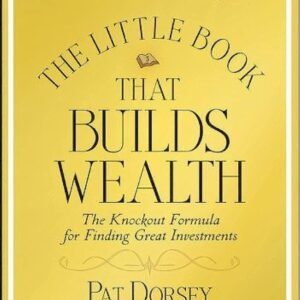What’s a stock? Or a bond? The most basic investing questions — answered.
At first blush, investing may seem inaccessible and confusing — especially for beginners. But it’s a fairly simple concept. Here’s the gist: Investors (like you) buy a piece of a company or lend money to a company (or to the government) in the hopes of making more money. The amount of money you make depends on how well the company does.
All the concepts and jargon can be easily demystified, and there’s no reason you should avoid investing just because it might be a little intimidating at the outset. Here’s a breakdown.
1. What’s the Difference Between a Stock and a Share?
“Shares” are the ownership certificates of a specific company — so you might say you have 50 shares of Facebook. Owning stock, on the other hand, is a more general term that means you own a number of shares in a company or multiple companies. For example, if you own shares of Facebook and Google, you own tech stock.
But really, this is just semantics. People often use the terms interchangeably.
Whether you call it a “share,” “equity,” or “stock,” it means the same thing: You have some ownership in a company’s assets and earnings.
2. What’s a Bond?
Bonds are issued by companies, states and governments (in both the U.S. and abroad) to help finance various projects. For example, if an airline wants to buy a bunch of new planes, they might issue bonds to borrow money from investors in the market (like you). An investor who buys a bond loans money to the corporation or government for a set time at a fixed interest rate. This rate is determined by a number of factors, like what’s going on in the economy and how risky it is to be lending to the company or government.
In general, a bond is a more conservative investment than a stock, so bonds are often used to offset stock investments. Stocks tend to be riskier because their value is more likely to bounce up and down depending on the day.
If investors are worried about being paid back, they’ll want to be compensated for taking on that risk with a higher interest rate. If the entity who puts out the bond is unable to pay back its creditors (like you), they will default and you may not get your money back. The company will likely declare bankruptcy and the company’s assets will be liquidated in order to pay back its creditors, but there may not be enough cash to go around. Some investors might be out of luck.
3. What Does ‘Risk’ Mean?
When you invest in the stock market, you’re accepting some risk because we can never know exactly how well a company will perform. Maybe the companies you are investing in will outperform expectations and you’ll get more money than you were hoping for. Then again, maybe their valuations will tank and you’ll lose some of your investment.
An investment of any kind is all about balancing risk and reward. In general, riskier bets come with more potential for upside, but this also can mean things could go the other direction as well, resulting in a loss. On the flip side, a more conservative approach — like bonds — limits both the potential for upside and downside, and results in a much smoother ride. Deciding your risk tolerance is key to successful investing for beginners.
4. What’s a Mutual Fund?
A mutual fund is a pool of investments created by a money manager, who places money in various stocks, bonds and other investments, like real estate or natural resources. This is really no different from a group of friends deciding to pool their money to buy something they couldn’t each afford on their own. Anyone can invest in a mutual fund. Rather than buying one share of Apple stock, you could invest in one share of a fund that invests in a much larger portfolio of U.S. companies, and still get a little piece of Apple.
5. What’s an ETF?
Exchange-traded funds, better known as ETFs, work similarly to mutual funds, but their up-front and ongoing investing fees are generally lower. Why? One reason is that most ETFs track an index, which is basically a chunk of the market. It’s a lot less work to replicate an investment strategy that essentially already exists inside the index. (This means ETFs can be a great way for beginners to start investing!) On the other hand, many mutual funds try to create a strategy that’s meant to beat the market.
6. Is There a Minimum Investment?
Generally speaking, there are no minimums. But if you decide you want to start investing, you’ll need an investment account at a brokerage firm. (Some of these require a minimum balance to get started; others don’t.) Online brokerage firms are usually a good place to start investing for beginners, since most are low-cost and offer education tools.
7. Do I Need a Broker to Buy Stock?
There was once a time when investors called their brokers on the phone with instructions to buy and sell stocks on their behalf for a commission. Today, investors have less need for an actual human to help us with executing our transactions. Instead, we can go directly to an online brokerage firm, like Vanguard or Fidelity. There are even robo-advisor firms that are designed to streamline investing for beginners and handle the rebalancing for you. There are many out there — do your research to find one with a good reputation and (ideally) low fees. The other option is go through a robo-advisor, which streamlines investing into an app.
8. How Much Does It Cost to Buy Stock?
The short answer: It depends. Many investment firms require you to pay a transaction fee for purchasing a stock, mutual fund or ETF. The fee for each can vary based on the firm where your account is held, how much of a particular investment you are buying and the size of your investment account. You will also likely pay a similar transaction fee if you decide to sell the investment.
Along with the one-time transaction costs, mutual funds and ETFs also have ongoing fees called expense ratios. These require you to pay an annual percentage. For example, if you want to invest $1,000 in a mutual fund that has a 0.5 percent expense ratio, you will pay $5 over the course of the year. Aim to keep expense ratios below 1 percent.
9. Do I Have to Pay Taxes on Money I Earn from Stocks?
There are a couple of different ways to make money from investing that can then be taxed.
First, the value of your investment can increase over time, which is known as a capital gain. You won’t pay taxes on this until you sell the investment and the gain is “realized.” If you sell the investment before you’ve held it for a full year, you’ll pay taxes at your regular income tax rate. If you wait for the one-year mark, you will only pay at the capital gains rate of 15 percent.
Secondly, stocks can pay dividends, a form of profit sharing with investors. However, some companies choose not to pay dividends at all and reinvest those profits back into the company itself (which can pay off in terms of capital gains down the line). Bonds pay interest income, similar to how you would pay interest to the bank if you took out a loan. These payouts are taxed in the year you receive them at your normal income tax rate, with a few exceptions. (One exception is qualified dividends — an IRS designation for certain types of stocks. They’re taxed at a lower rate of 0 to 20 percent, depending on your income.)
10. What Happens if I Want My Money Back?
You always have the option to sell your investments and transfer the proceeds out of your investment account. It’s important to remember, though, that there will likely be tax consequences for doing so.
Aside from the tax considerations, there is also the chance that the value of your investment is temporarily down. Short-term price fluctuations are common when investing, but if you choose to sell at that moment, you lock in those losses rather than holding the investment with the hope that the price will rebound. Panic selling is a common investing mistake beginners make, so take a close look at your shares’ value before you decide whether to pull the trigger.



















Leave a Reply